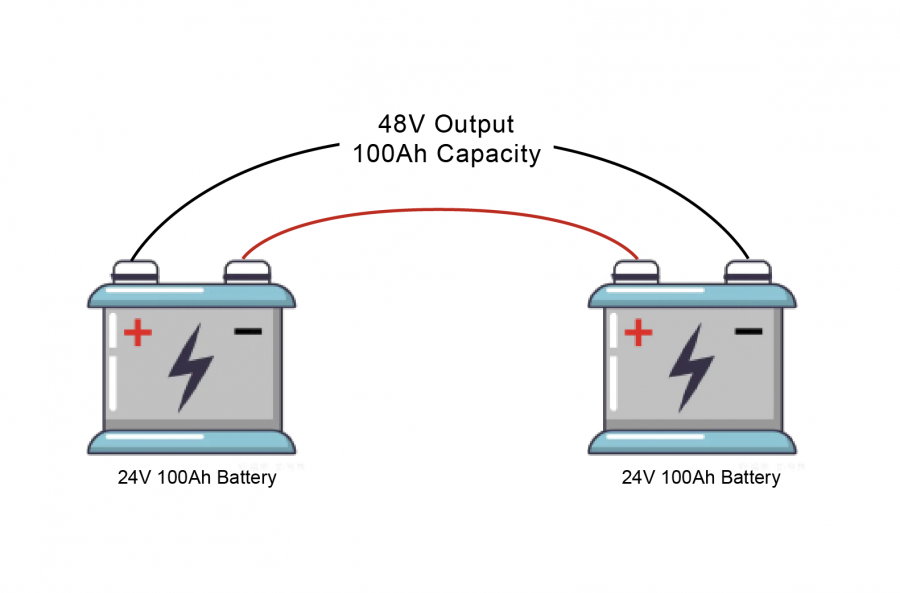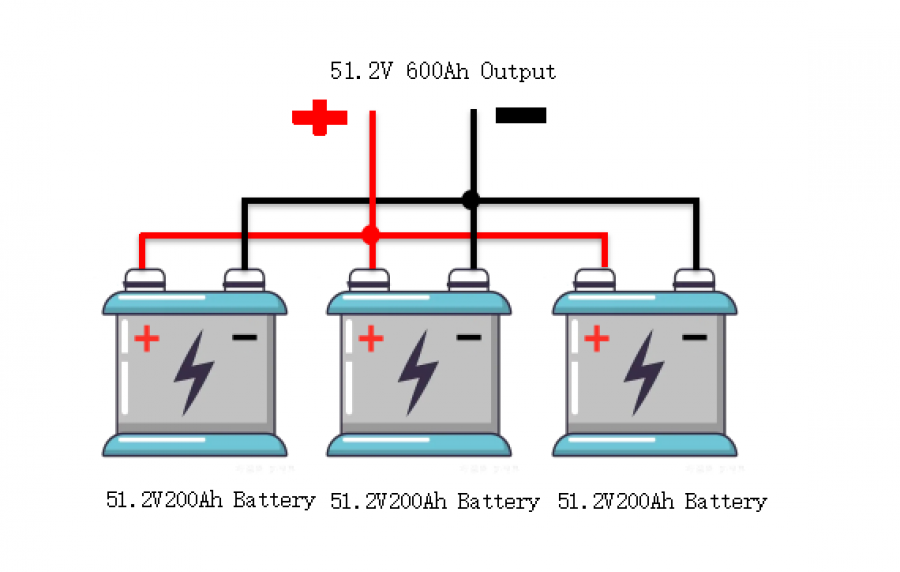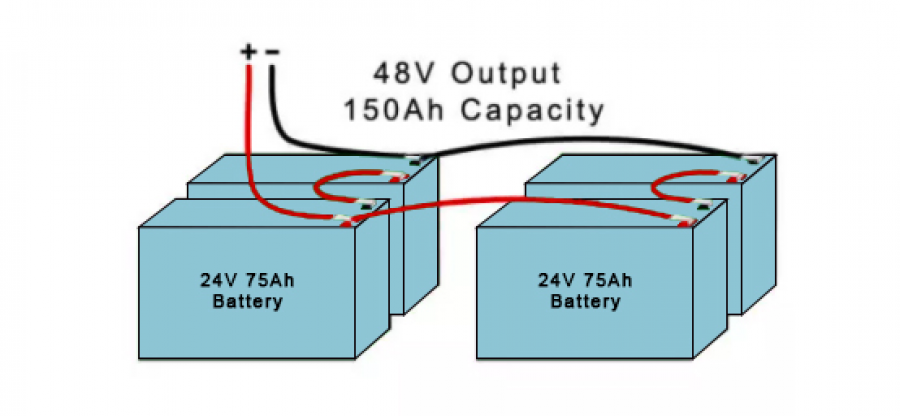

How do series connection and parallel connection of lithium batteries work? What are the advantages and disadvantages of these circuits for power storage?
Series connection (also called Series circuit) increases the operating voltage. If a higher capacity of the electricity storage is required, a parallel connection of lithium battery bank is necessary. In some energy storage applications, combinations of series and parallel connection are also used.
Lithium Batteries are Connected in Series as Follows
Any number of lithium batteries are usually connected in series. The negative pole of one lithium battery is connected to the positive pole of the other lithium battery so that the same current flows through all batteries. The resulting total voltage is then the sum of the partial voltages. Series circuit of lithium batteries is often referred to as series connection.

Example: If two batteries of 200Ah (amp-hours) and 24V (volts) each are connected in series, the resulting output voltage is 48V with a capacity of 200 Ah.
Advantages and Disadvantages of the Lithium Battery Series Connection
Series connection of lithium batteries makes it possible to produce higher total voltages in this way. However, the disadvantage is that the weakest lithium ion battery cell affects the performance of the entire series. In the worst case, a defective lithium solar battery can cause the entire lithium battery storage series to fail. Therefore, additional fuses must be added in series.
In the case of compact solar power storage systems, it also happens that the entire must be replaced if a lithium ion battery cell is broken. The control (cell balancing) of an lithium ion battery backup based on a series connection also leads to performance losses. As a rule, only battery cells of the same manufacturer, type and lithium ion battery technology can be connected in series.
This is How Lithium Batteries are Connected Together in Parallel
When lithium batteries are connected in parallel, the positive terminal is connected to the positive terminal and the negative terminal is connected to the negative terminal. The charge capacity (Ah) of the individual lithium ion batteries then adds up while the total voltage is equal to the voltage of the individual lithium ion batteries. As a general rule, only lithium ion batteries of the same voltage and acid density with the same state of charge should be connected together in parallel, and wire cross-sections and lengths should also be exactly the same.

Example: If two batteries, each with 200 Ah and 51.2V, are connected in parallel, this results in an output voltage of 51.2V and a total capacity of 600Ah.
Advantages and Disadvantages of the Lithium Battery Parallel Connection
In this way, with a parallel connection of lithium battery bank, the performance and also the service life can be increased. Used as power storage for PV power, parallel connection of lithium solar batteries can reduce the cost of home battery storage system and create new opportunities in energy storage construction, unlike series connection.
Nevertheless, the charge control of lithium solar batteries connected in parallel is not straightforward, as each battery is also subject to aging and thus a potential source of error. Therefore, it can also be advantageous to plan for one large lithium battery bank instead of several small lithium ion batteries.
If a parallel connection is nevertheless made, care should be taken, as with series connection, to use lithium batteries of the same type, capacity, age and state of charge. In addition, the shortest possible cable runs should be used to prevent major voltage losses.
However, newer cell electronics placed on each lithium-ion battery cell make it possible to combine lithium batteries regardless of size, manufacturer, storage technology, and performance in a power storage system by continuously measuring the capacity during operation. In this way, lithium solar batteries connected in parallel can be gradually upgraded during operation.
Series and Parallel Connection of Lithium Battery Storage Systems
A combination of a series and a parallel connection allows greater flexibility to achieve a certain voltage and power with standard batteries. The parallel connection gives the required total capacity and the series connection gives the desired higher operating voltage of the battery storage system.

Example: 4 batteries with 24 volts and 75 Ah each result in 48 volts and 150 Ah in a series-parallel connection.
For the storage of power, it may be advisable to combine a larger number of (identical) lithium batteries in series-connected blocks and to connect these blocks in parallel to avoid voltage differences between the parallel-connected lithiumbattery blocks. A fuse should then be installed between the blocks connected in parallel. Depending on the application, it may then also make sense to charge and discharge the blocks alternately rather than in parallel.